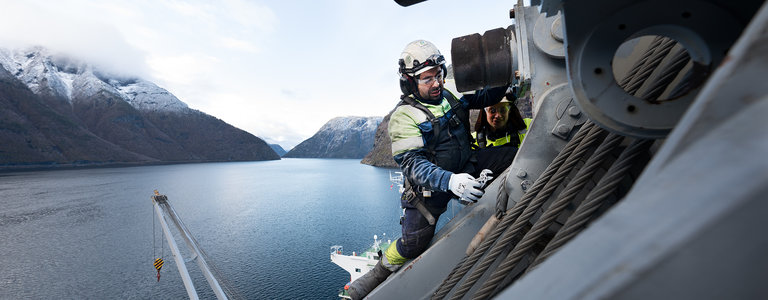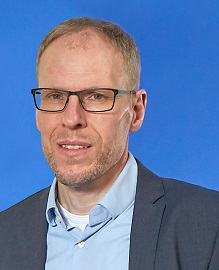
Occupational safety in the industrial service: "Sustainability means safety first"
The importance of occupational safety in the process industry is constantly increasing. What kind of leverage is available to further improve occupational safety? What future technologies can support these efforts? Answers from Fred Lütkenhaus, Head of Corporate HSEQ at Bilfinger.
Accidents occur relatively frequently in the process industry, especially during maintenance work. Do you have an explanation for this?
There are in fact a number of explanations: Firstly, maintenance work is always carried out under time pressure. The purpose of maintenance work is, after all, to eliminate defects or malfunctions that could potentially interrupt or hinder production operations. Secondly, the work is often carried out under difficult conditions such as narrow spaces, in heat or with the risk of falling. Not only that, but maintenance work is always an “exceptional” situation in which unplanned events can occur. This is particularly true when activities overlap in time or space, such as when several trades are being carried out side by side. In such cases, the greatest hazards exist due to what is then rapidly increasing complexity.
How do you maintain an overview in situations like that?
It is important that there is a central unit in charge of all processes. This unit has to keep an eye on all of the potential hazards and issue its approval for dangerous work. With the help of work permits, which must be updated daily and describe the risk assessments and corresponding safety measures, it is possible to that work only begins once all the necessary occupational safety measures have been implemented. But in order for everything to run smoothly, the units carrying out the work must also be able to handle and check these work permits. It is a great advantage if the partners involved have known each other for some time and the processes are coordinated in great detail. The increasing digitalization of processes in maintenance is very helpful here.
Remote control and augmented reality technology also have considerable potential for maintenance and repair tasks."
What do you see as the most important levers for increasing occupational safety during maintenance and repair work?
For me, the most important levers are the qualifications and awareness of supervisors and employees. This is because all the devices and precautions for occupational safety are worth nothing if they are not meticulously observed and, ideally, intrinsically implemented. Unfortunately, most accidents today can be traced back to the fact that employees - not infrequently due to time pressure, the abundance of tasks or sloppiness - do not sufficiently put safety rules into practice and want to quickly achieve a solution to the problem. In doing so, however, they lose sight of their own safety and the safety of their colleagues (Brother’s Keeper Attitude). This type of behavior must be avoided at all costs. And avoiding it is only possible if specialists and managers are trained and sensitized to occupational safety issues on an ongoing basis, in addition to audits and inspections. Another lever is the Behavior Based Safety method, which we intend to use more frequently in the future. The same applies to even more thorough analyses of the data available in our well-established ACTIVE reporting system.
How important is occupational safety when awarding contracts?
Occupational safety indicators are now a regular part of tenders in the process industry and are becoming increasingly important. If industrial service providers demonstrate above-average performance in this area, this significantly increases the probability of being commissioned. This applies not only to the awarding of contracts, however. Shortcomings can also lead to the loss of existing contracts and, of course, to high contractual penalties and claims for damages. We very much welcome the increased importance of occupational safety at Bilfinger, because the health and safety of our employees and external partners is a top priority.
How have the accident figures at Bilfinger developed in recent years?
One of the goals we have been pursuing for many years is to be a leader when it comes to accident prevention in our industry. To this end, we have implemented numerous measures as part of the “SafetyWorks” initiative to continuously improve occupational safety in all areas. As a result, our Group-wide key performance indicators have developed extremely well. Lost-time accidents were at an internationally leading level in our industry in the past financial year, with an accident rate of 0.21 per 1,000,000 working hours. For us, occupational safety is a central element of sustainability. At Bilfinger, sustainable therefore also means maximum safety first.
In your opinion, what forward-looking technologies have the potential to increase occupational safety in maintenance and repair?
There are a number of interesting developments: On the one hand, of course, increasing digitalization is contributing to higher occupational safety. If all work steps are digitalized, from the risk assessment to the completion of the activity, the manager can concentrate more on the actual task. Documenting hazardous situations and near-misses with the help of an app also promotes occupational safety because the data can be recorded and evaluated more systematically. Remote control and augmented reality technology also have considerable potential for maintenance and repair tasks. With their help, employees receive additional information about work steps and the potential hazards they pose. And I also expect a lot of input from increasingly intelligent sensor technology, which, in addition to predictive maintenance, can also make a significant contribution to the analysis and elimination of defects.

Fred Lütkenhaus
Head of Corporate HSEQ bei at Bilfinger
